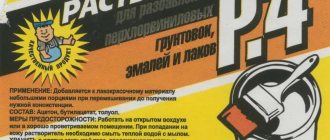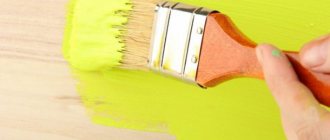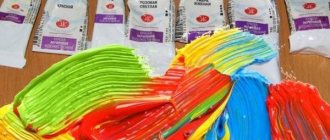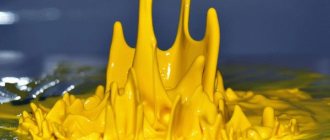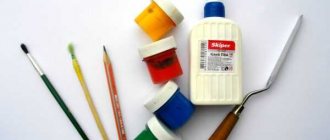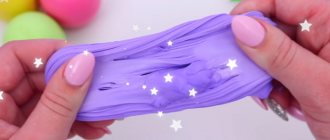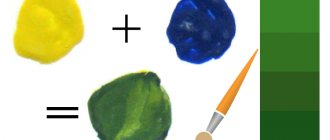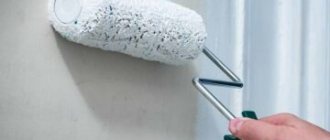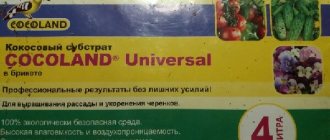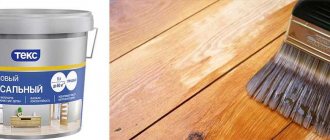During construction and repairs, situations often arise when paint or putty needs to be thinned a little. For this purpose, special compounds are used that do not change the qualities of the source material. White spirit is considered one of the most popular and inexpensive.
What is the difference between white spirit and acetone?
Unlike white spirit, acetone is more aggressive, volatile, with a pungent odor, is part of mixed solvents, is effective, and is used as a foam and sealant cleaner; displaces moisture.
Interesting materials:
What is the difference between animals and plants? What is the point of a smart home? What foods contain iron? How to boil kitchen towels? What is the value of law? How do you get paid while on maternity leave? What foods have fiber? Which food contains a lot of food? What foods are high in fat? What foods contain carbohydrates?
Kerosene, its varieties and applications
Kerosene is obtained by rectification or direct distillation of oil, possibly followed by hydrotreating. Chemically, it is a flammable mixture of liquid hydrocarbons with a boiling point of 150-200 degrees. Kerosene is a transparent, colorless (possibly slightly yellowish), slightly oily liquid to the touch. The most commonly used types of kerosene include aviation, technical and lighting.
Despite the difference in names, all of them can be used as a solvent; for example, aviation kerosene TS-1 is an excellent solvent (even after the expiration date, this substance is successfully used to remove contaminants from equipment, car parts and other mechanisms).
Dearomatized by deep hydrogenation, technical kerosene containing no more than 7% aromatic hydrocarbons is used as a solvent for the production of PVC by polymerization in solution.
Shaving foam
What it replaces: defogger.
What an effect: the glass stops sweating. At high humidity, condensation does not form on them.
How to use. Apply a little foam or shaving gel to the inside surface of the cleaned glasses and leave for 5-10 minutes until completely dry. As in the case of anti-rain, all that remains is to simply rub the resulting layer with paper towels or a dry cloth until the glass becomes completely transparent. This protection lasts for about a couple of months, then the procedure can be repeated.
Stain remover for laundry
What it replaces: interior cleaner.
What is the effect: removing old stains and dirt, cleaning upholstery.
How to use. Remove all dry dust and dirt using a vacuum cleaner. Soak a new shoe brush in the cleaning product and scrub the upholstery vigorously, focusing on heavy dirt. Then, while rinsing the brush in clean water, continue scrubbing to remove all dirt. If you have a washing vacuum cleaner, it is better to use it at this stage.
Next, wipe everything dry with a clean cloth and dry thoroughly - best for a couple of days in the sun in hot weather. If you miss this important point, mold may form inside the seats.
Preparatory activities before painting
In addition to diluting paint compositions and restoring them when they dry, before direct application to the surface, it must be degreased. This will help increase the level of adhesion, especially on very smooth surfaces (for example, metal). In addition, the paint will be easier to distribute on the surface, and the dried layer will be uniform and smooth. In the case of applying a paint coating not with an ordinary brush or roller, but with special sprayers (spray guns, spray guns), most often there is a need to reduce the density and viscosity of the composition. An accidentally stained surface can be easily wiped off with a suitable product. Which solvents are for which paints? For a good result, you need to correctly select a solvent that will match the type of paint used .
How to choose the right paint roller for painting
Choosing the solvent wisely
Below is a list of which solvents are used for which paints.
Solvent AR* 70 Turpentine extract. 3 Xylene 27
Solvent P, containing acetone, hydrocarbons, ethers and other components, is a yellowish or colorless liquid. What is the difference between solvent and? Butyl acetate can be mixed with water and various organic solvents in any proportions. Conditions for storing and working with solvent To dilute paints and varnishes, the solvent is introduced into the product slowly and in small doses, stirring constantly, until the desired viscosity of the material is obtained. Pentaphthalic, glyphthalic, urea-formaldehyde Varnish MC Enamels: Which solvent smells the least? The solvent, which contains acetone, ethanol, toluene and other components, is used in almost all finishing works. Pentaphthalic, glypthalic, melamine alkyd Enamels: It is a polar solvent.
Petroleum solvent and the breadth of its application
Petroleum solvent is a colorless (possibly with a yellowish tint) liquid substance that has a characteristic odor and consists of aromatic hydrocarbons, which include xylenes. Solvent is produced by pyrolysis of petroleum fractions in tube-type furnaces at high temperatures. The main disadvantages of the solvent are its high toxicity and flammability, which requires special operating conditions. However, solvent has extremely wide application in enterprises:
- As a solvent for diluting paints and varnishes to the desired consistency
- For diluting oily compounds - oils, rubbers, mastics, bitumen
- In the mechanical engineering industry for cleaning and rinsing parts
- For degreasing and preparing metal surfaces and tools for use
How to dissolve dried car paint?
Your paint
It was good and thickened during storage; it can be revived with white spirit solvent.
will dissolve paint
well , add it to
the paint
in small proportions and hang it carefully.
Interesting materials:
I sold my car and received a fine, what should I do? I sold my car, there are fines, what should I do? I sold my car and I still have insurance, what should I do? I sold my car and received fines, what should I do? I sold my car as collateral, what should I do? I drove through a red light, what should I do? Program where presentations are made? A program where you can make music? An accident occurred, what should I do? There was an accident, what should I do?
Thin the oil paint
Probably everyone can remember a similar incident: during the renovation period, more than once, due to their own carelessness, they forgot to close a can of paint, which, to their great disappointment, caused the material to harden and was no longer suitable for use.
Below are examples of possible paint solvents that will help you save thickened paint, or simply dilute new paint. Oil paints, by themselves, can be either thickly rubbed or immediately have the consistency necessary for their application. Paints, conventionally called “thick”, are used extremely rarely in this form; most often they are diluted with a solvent. Also, already dried paints or those that are planned to be used as a primer are diluted with this specific liquid.
The type of paint solvent is determined according to the properties of the material on which the paint will be applied.
Oil paint can be easily diluted with many chemicals, which are extremely easy to purchase in hardware stores. Examples include the following solvents: turpentine (purified or not), gasoline, solvent 647 kerosene (only with the addition of a drier), white alcohol. However, white alcohol, thinner 647 and turpentine are by far the most widely used types of solvents.
Glycerol
What it replaces: tire ink.
What an effect: the surface of the rubber becomes clean and bright, giving the impression of a new wet tire.
How to use. Buy a bottle of glycerin at the pharmacy and mix it with water in equal proportions. If you have a container with a spray bottle on hand, you can use it for application; if not, a regular dish sponge will do just as well. Apply the prepared product to the side surface of the tires, after cleaning them, and leave until dry.
Which solvents for which paints: the most popular
Which solvents for which paints? There is a wide variety of solvents and here is a list of the most used: solvents (P-4, 646,647,649,650), white alcohol, xylene, gasoline, turpentine, solvent, acetone. Let's take a closer look at each of them.
How to wash whitewash from the ceiling
Solvent R-4
A universal remedy, with a false composition. It is synthesized using a combination of ketones, esters and hydrocarbons. Used for dyes with polyacrylate and polyvinyl chloride, and also for diluting paints and varnishes based on vinylidene chloride and vinyl acetate. Used to dilute all kinds of paints and coatings, easily washes off various contaminants. Also used to prepare various other materials used to perform specific tasks.
R-4 is produced in accordance with GOST 7827-74. Each type of solvent is either a directly active component, or it contains a mixture of them that performs specific functions. For example, it affects specific substances. This is exactly the mixture that the R-4 brand product is. According to its characteristics, it belongs to completely transparent products of crystal purity. Therefore, it can be confused with other substances. A distinctive feature is a pronounced pungent odor that literally corrodes the eyes.
The wide demand is explained by its unique properties, provided by the components contained in the composition. Being a universal product, R-4 is commercially available and sold in every hardware and construction store. It is inexpensive and is used sparingly.
When working with such solvents, you should be extremely careful, because prolonged inhalation of vapors and contact with skin will not leave a trace. As a result of prolonged exposure of the substance to the human body, the mixture causes dizziness, poisoning, nausea, vomiting and other ailments.
R-4
Solvent 646
A mixture of ethyl cellosolve, toluene (50%), butanol (10%), ethanol (15%), butyl acetate (10%) and acetone (7%). Using this solvent you can dilute epoxy and acrylic varnishes. An important quality is its low toxicity. Therefore, when working with it, they do not use protective equipment. Can be purchased in specialized stores, used in everyday life for working with putty. Has a transparent consistency. When working with it you need to be very careful, since with a large dosage it can remove an excess layer of paint. Sometimes they dilute the paint to obtain the required consistency. The disadvantages of this solvent are its ability to ignite easily and its strong aroma. When the solvent dries completely, the chemical odor disappears and a slight shine remains. Thanks to the acetone in its composition, it is excellent for working with nitro, epoxy and glyphthalic paints, as well as with most other paints.
Solvent R-646
Solvent 647
Consists of a mixture of butanol (7.7%), toluene (41.3%), butyl acetate (29.8%), ethyl acetate (21.2%). Used in working with nitro enamels and nitro varnishes, used in the process of painting cars. Convenient to use when it is necessary to remove a thin layer of paintwork. Quite often used by painters as a thinner for various paints and varnishes. Similar to solvent 646, the main difference is that acetone is not included in solvent 647. In this regard, it has a milder effect on paintwork compared to solvent 646.
R-647
Solvent 649
Ingredients: xylene, ethylcellosolve and butanol. Used for diluting paints and enamels. It is more toxic, so protective equipment is required to work with it. The substance must be protected from direct sunlight and stored in a dark, tightly sealed container. Dilution of enamels: NTs-170, NTs-184, NTs-216, NTs-217, NTs-25, NTs-246, NTs-258, NTs-262, NTs-271, NTs-273, NTs-1104, NTs-282 , NTs-291, NTs-299, NTs-929, NTs-5100, NTs-5123, EP-773, KO-83, NTs-1124, NTs-1120, etc., primers: NTs-081, MS-067, MCh-042 and others, varnishes: NTs-269, NTs-279, NTs-292, NTs-5108, EP-524, etc., putties: NTs-007, NTs-008, NTs-009, EP-0010, EP -0020 etc.
In auto painting practice, solvent P646 is used mainly for technical purposes - washing spray guns and spatulas. The main criterion that car painters set for this solvent is not a high price, high-quality cleaning and an acceptable smell (there are 646 solvents that can easily knock out even an elephant with their smell).
R-649
Solvent 650
The substance consists of xylene, butyl alcohol and ethyl cellosolve. It is used to dilute paints and enamels. Toxic product, so be sure to use protective equipment. Using this mixture, it is possible to dilute nitro varnish, putty, nitro enamel, as well as adhesives and mastics. The production of “Solvent 650” is carried out in accordance with TU 2319-003-18777143-01. The water concentration is a maximum of 2%, and the inclusion of volatile ethyl esters is 20-25%.
The combination of this solvent is colorless or has a yellowish tint. It lights up quickly and has a unique smell. According to current standards, the solvent should not form a solid precipitate during long-term storage. This solvent makes the enamels less viscous and makes them easier to apply with a paint brush. When the paint dries, the active substances evaporate without a trace. Before use, shake the container thoroughly so that all components are well mixed. The packaging should be free of dust and salt build-up, especially around the neck.
Advantages of R-650
The technical characteristics of the solvent allow it to be combined with NTs-11 and GF-750 RK enamels. The substance must be introduced into the prepared paint and varnish material in small doses, constantly stirring the liquid until it reaches a certain viscosity. Under normal environmental conditions, solvent consumption is about 1 liter per 20 square meters. m. When paint is applied using pneumatic spraying, the costs of the P-650 increase by approximately 1/5. The exact value is determined by the pore size and roughness.
This solvent is considered better than 646, which is used to thin car body enamel. Application and mixing with other formulations is carried out strictly without smoking, eating, drinking water or taking medications. If the standard requirements are met, the shelf life of the mixture reaches 365 days from the date of release, which is noted on the packaging. This solvent should not be poured onto the ground, into water or sewerage. But after drying or evaporation of its residues, you can treat the container of solvent as with standard household or repair waste.
This composition can be used indoors only if it is completely ventilated immediately after finishing work.
Solvent R-650
White Spirit
A popular remedy, mainly because it is practically harmless to health; it is often used to clean paint-stained bodies. It is often used in everyday life, as it is capable of breaking down vegetable oils and fats, nitrogen organic compounds, and petroleum fractions. White spirit is also actively used in industry for dissolving oil paint, rubber and bitumen mastic, various varnishes and enamels. The composition refers to petroleum solvents (nefras). It is a high-boiling fraction of gasoline obtained through the direct distillation of low-sulfur oil.
Nefras-S4 155/200
The solvent, also known as Nefras-C4 155/200, belongs to the group of mixed solvents (designated index C), which contain hydrocarbons of all classes in concentrations not exceeding 50%: aliphatic (paraffin, isoparaffin, naphthenic) and aromatic. The amount of aromatic hydrocarbons in the mixture equal to 16% classifies the solvent as subgroup 4 of the classifier (4).
The designation also indicates the temperature in Celsius within the boiling range (155/200). Does not contain foreign mechanical impurities, water, water-soluble acids and alkalis. The product is a liquid, oily to the touch, colorless, with an unpleasant kerosene odor.
Characterized by the ability to:
- quickly dissolve organic compounds, vegetable oils and fats, some rubbers, epoxy esters;
- effectively degrease metal surfaces;
- evaporate quickly;
- easy to ignite;
- has a low level of toxicity, inhalation of vapors can give a narcotic effect;
- aggressive corrosive effect due to the presence of sulfur compounds;
- as a chemical compound it is stable and practically does not form deposits.
Foreign analogues of white spirit (nefras-C4-155/200) have some differences in characteristics, first of all, they do not have a sharp specific odor, which makes them environmentally friendly.
At the stage of additional processing, the product is purified from excess aromatic hydrocarbons. At the same time, the imported drug also loses some of its dissolving properties.
White Spirit
Xylene
Suitable for dissolving epoxy resins, bituminous varnishes and paints based on glyphthalic resins. Used in the process of dye synthesis. With xylene, the paint becomes brighter, but takes longer to dry. This substance is an aromatic hydrocarbon. The word "aromatic" in the chemical industry means that a chemical is a volatile, easily evaporated compound. On the other hand, hydrocarbon components provide an increased ability to enter into chemical reactions, making xylene quite active. The first thing that follows from this is the ability to break down fats. Therefore, xylene is a very good surface degreasing agent.
There are two types of xylene, and their technical parameters are almost similar. It is important to know about this, since it affects the storage of the material and proper use; to determine the type, use the label on which the manufacturer must indicate the necessary information.
Main parameters:
- appearance – transparent liquid without a pronounced color,
- viscosity less than 0.5 (does not bind, resembles water),
- density from 0.860 to 0.870,
- boiling point +1400 Celsius,
- freezing temperature -400 Celsius,
- evaporates completely, without residue,
- the vapors are toxic and cause chemical poisoning of the body and pulmonary edema.
Xylene
Toxic solvent toluene
Toluene is a colorless, mobile, volatile liquid with a characteristic pungent odor. You will not find containers with toluene on store shelves, because, despite its harmless appearance, this composition is quite toxic and the effect of its vapors is considered narcotic. In addition, this substance is a fire hazard, and when interacting with air, its vapors form an explosive mixture.
However, toluene is used to dissolve some types of alkyds and resins, and it is also one of the components of other solvent mixtures, for example, solvents P-4, P-40, 645, 646, 647, 648.
Description of solvents
Many people believe that thinner and solvent are the same thing . This opinion is wrong . The first substances are used with the addition of a retarder. It slows down drying, prevents clumps, reduces tension and increases fluidity. The second is to bring the paint to the desired state. In other words, adding thinner to paint does not involve chemical reactions. Whereas a solvent has the ability to interact with a substance. And also penetrate into its structure and dissolve components of varnishes, enamels, etc. How to find out which solvents are for which paints?
How to properly dilute water-based paint
One of the most important properties of a volatile solvent is that it must evaporate gradually. Otherwise, defects may appear on the film surface. The main task of the solvent is to participate in the painting stage to give paints and varnishes the required degree of viscosity. In addition, they are also used to clean clothes, tools and skin contaminated after painting.
Turpentine
This is no less popular solvent for oil paints than white spirit. The composition is widely used for mixing and diluting not only oil dyes, but also alkyd styrene dyes. Turpentine is also used in the production of varnishes based on copal, rosin or dammara. Purified or unrefined turpentine is available for sale.
Before chemists created white spirit, turpentine occupied pride of place as the main liquid for dissolving varnishes and paints. This is an essential oil with a complex chemical composition. It is obtained by processing turpentine, resin and parts of coniferous wood saturated with resins. Today, modern industry produces three types of turpentines - wood, stump and turpentine products.
Wood liquid is obtained by processing tree resin and coniferous tree branches using special technologies. When fresh, it is a liquid with a yellowish or brown tint, which may disappear during processing.
Stump turpentines are produced using special technologies from the stump parts of coniferous trees. Turpentine oils are pure essential oils that are obtained by distilling resin. It is extracted only from a growing tree. This way, turpentine will not lose its unique properties and valuable elements during the production process.
Composition and technical characteristics
White spirit is a viscous transparent solvent, similar in consistency to machine oil and having a relatively low consumption. There is a base mixture from which the solvent is produced. Most Russian manufacturers, observing GOST, adhere to the proportions of the main elements specified in the document.
The composition of white spirit: 16% aromatic substances, 0.025% sulfuric matter, as well as paraffin or paraffin containing compounds in varying percentages. The ratio of components not exceeding the given indicators allows you to obtain a product quality certificate.
The solvent must meet the criteria regulated by GOST 3134-78:
- density (sometimes indicated as specific gravity) – no more than 0.790 g/cm3;
- flash point – not lower than 330C;
- volatility for xylene – 3-4.5.
Important! According to the degree of exposure, nefras has the 4th hazard class (low-hazard substances) according to GOST 12.1.007-76. The maximum permissible shelf life, during which all the main characteristics of the solvent are preserved, is 36 months.
White spirit is packaged in containers ranging from 250 grams to 1 liter (weight is calculated according to the density of the substance). The volume of solvent required for work must be determined taking into account its consumption indicated on the label.
Melamine sponge
What it replaces: Plastic stain remover.
What an effect: completely cleans almost any dirt, even traces of glue.
How to use. Lightly dampen the sponge with water and simply rub the surface, removing dirt from it. Don't press too hard or the sponge will crumble. The plastic of the center console, doors and sills is easily cleaned of old dirt and practically returns to its original appearance.
Petroleum distillates
Everyone knows what turpentine is, and it could be included in the sixth group of liquids. However, its performance characteristics are very close to those of petroleum distillates, and it is best to include it in this group. Each specific solvent for oil paints from the group has its own characteristics. The most common are petroleum distillates, which are also called hydrocarbons. The molecule of such a substance is a carbon and hydrogen atom. Liquids that are included in this group are produced by refining oil, or rather by dividing it into fractions under the influence of temperatures. Turpentine is a distillation product, but it is not obtained from oil at all, but from the resins of coniferous wood.
Petroleum solvents are used to work with waxes, oils, paints, and oil-based enamels. Any solvent that is hydrocarbon based has characteristics and properties that are similar to those of oils or waxes. Sometimes these liquids can be used in the production of lubricants or compositions for cleaning and caring for furniture. Distillates, which contain significantly less oil, such as toluene or xylene, can be used to remove oil stains and are most often used to degrease surfaces.
Any products based on petroleum distillates can be mixed in different ways and in any proportions. Alcohols and glycol ethers are not used with oil paints. They have different characteristics and properties.
